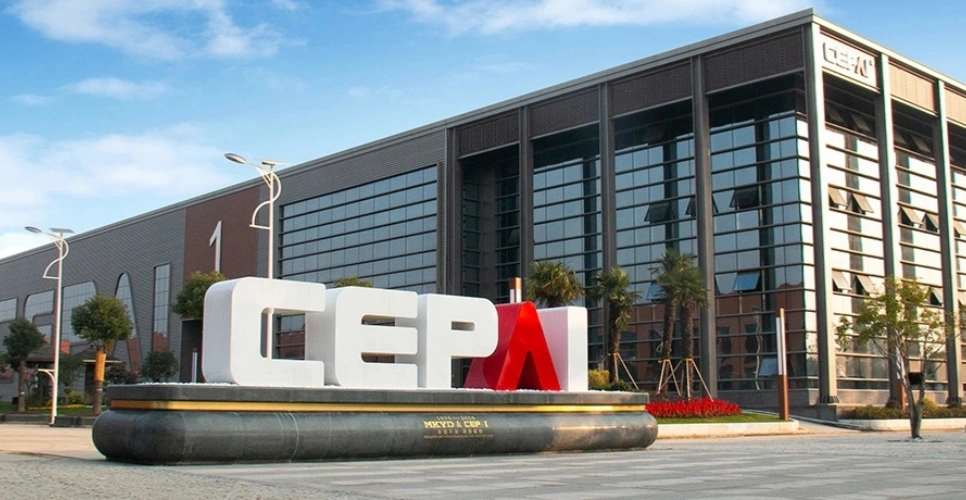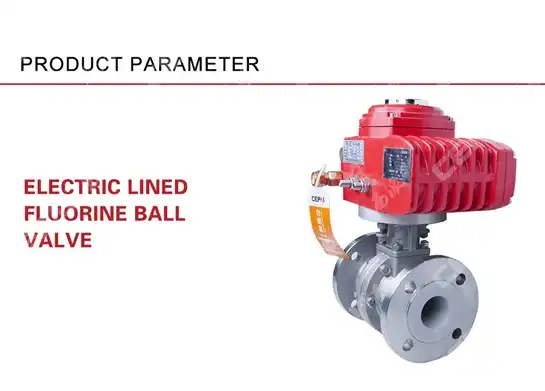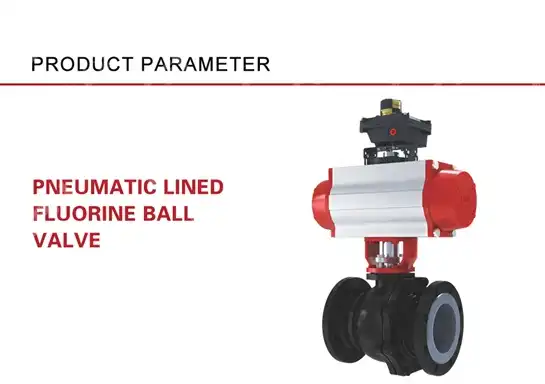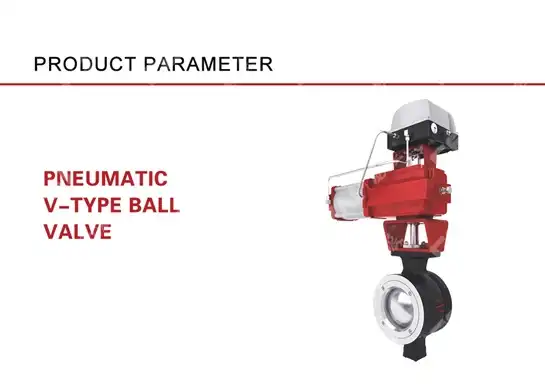A Guide to Ensuring Durability in Your Ball Valve System
Imagine your critical industrial process grinding to a halt because of premature Ball Valve failure, costing thousands in downtime and emergency repairs. This scenario haunts facility managers across petrochemical, power generation, and oil and gas industries daily. A comprehensive understanding of Ball Valve durability factors isn't just technical knowledge – it's your insurance against catastrophic system failures and unexpected maintenance costs. This guide provides essential strategies, proven maintenance protocols, and expert insights to maximize your Ball Valve system's operational lifespan while minimizing total cost of ownership.

Understanding Ball Valve Construction for Enhanced Durability
-
Material Selection and Its Impact on Longevity
The foundation of any durable Ball Valve system begins with proper material selection tailored to specific operating conditions. Stainless steel Ball Valve components offer superior corrosion resistance in aggressive chemical environments, while carbon steel variants provide excellent strength for high-pressure applications. Advanced material technologies, including duplex stainless steels and specialized alloys, extend operational life significantly beyond standard materials. The valve body, ball, and seat materials must be carefully matched to prevent galvanic corrosion and ensure consistent sealing performance throughout the service life. Manufacturing precision plays a crucial role in Ball Valve durability, with tight tolerances ensuring proper ball-to-seat alignment and minimizing wear patterns. High-quality Ball Valve systems incorporate precision machining techniques and advanced quality control processes that verify dimensional accuracy and surface finish specifications. These manufacturing standards directly translate into reduced maintenance requirements and extended operational intervals between service activities.
-
Sealing Technology and Pressure Rating Considerations
Modern Ball Valve sealing systems utilize advanced elastomeric compounds and metal-to-metal sealing technologies designed for specific temperature and pressure ranges. Soft-seated Ball Valve designs excel in general service applications, providing bubble-tight shutoff with minimal operating torque requirements. Metal-seated configurations offer superior durability in high-temperature applications where elastomeric seals would degrade rapidly, ensuring long-term performance in challenging service conditions. Pressure rating selection significantly impacts Ball Valve durability, with properly sized valves operating well within their design limits experiencing dramatically extended service lives. Over-specification provides safety margins that account for pressure transients and thermal cycling effects that commonly occur in industrial systems. The relationship between pressure class and wall thickness creates additional structural integrity that resists stress concentration and fatigue failure mechanisms.
Implementing Effective Ball Valve Maintenance Strategies
-
Preventive Maintenance Protocols and Inspection Schedules
Regular maintenance of ball valves protects against costly failures and involves systematic inspection, cleaning, lubrication, and testing to prevent problems before they occur. Establishing comprehensive maintenance schedules based on operating conditions, fluid characteristics, and historical performance data optimizes Ball Valve reliability while minimizing unnecessary interventions. Critical applications require more frequent inspections, typically every three to six months, while general service installations may extend to annual maintenance cycles. Visual inspections should encompass external leakage assessment, actuator condition evaluation, and mounting hardware integrity verification. Internal inspections during scheduled maintenance shutdowns allow for seat condition assessment, ball surface examination, and stem packing evaluation. Documentation of maintenance activities creates valuable trending data that enables predictive maintenance strategies and optimal replacement scheduling.
-
Cleaning and Lubrication Best Practices
Proper cleaning of ball valves should occur at least once a year, or more frequently in particularly dirty environments, using appropriate cleaners - gas or compressed air for metal components, alcohol or water-based cleaners for non-metal parts. Systematic cleaning procedures remove accumulated debris that can cause premature wear or prevent proper sealing function. Flushing systems with compatible solvents or cleaning agents removes contaminants that could compromise Ball Valve performance over time. Lubrication programs must consider both the valve's mechanical components and the service fluid's impact on lubricant compatibility. High-quality lubricants specifically formulated for Ball Valve applications provide superior film strength and temperature stability compared to general-purpose alternatives. Stem packing lubrication prevents galling and reduces operating torque while extending packing life significantly beyond dry operating conditions.

Operational Factors Affecting Ball Valve System Longevity
-
Proper Installation Techniques and System Integration
Correct installation practices establish the foundation for long-term Ball Valve reliability and optimal performance characteristics. Proper pipe alignment prevents stress loading on the valve body that can lead to distortion and premature seal failure. Support structures must adequately accommodate thermal expansion while preventing excessive loading on valve connections during system thermal cycling. Installation torque specifications for flanged connections require careful attention to ensure uniform gasket compression without over-stressing bolt threads or flange faces. Thread compound selection and application techniques prevent galling while ensuring proper preload distribution across the joint. System commissioning procedures should include pressure testing and operational cycling to verify proper installation before placing the system into service.
-
Operating Conditions and Environmental Considerations
Operating temperature fluctuations significantly impact Ball Valve component expansion rates and sealing interface stress distributions. Gradual temperature changes allow thermal equilibrium without excessive stress, while rapid temperature swings can cause distortion and accelerated wear. Insulation systems and heat tracing applications help maintain stable operating temperatures and prevent condensation-related corrosion issues. Fluid velocity through Ball Valve systems affects erosion rates and turbulence patterns that can impact long-term durability. Regular inspections, cleaning, and pressure testing can help extend the life of valves and reduce the risk of unexpected failures in high-pressure applications. Proper sizing ensures reasonable velocity limits while maintaining adequate flow control authority throughout the operating range.
Advanced Technologies for Ball Valve Durability Enhancement
-
Smart Monitoring and Predictive Maintenance Systems
Modern Ball Valve systems increasingly incorporate intelligent monitoring technologies that provide real-time performance data and early warning of developing problems. Wireless sensor networks monitor key parameters including operating torque, stem position, and temperature profiles that indicate component condition. Data analytics platforms process this information to identify trends and predict maintenance requirements before failures occur. Remote monitoring capabilities enable centralized oversight of multiple Ball Valve installations across large facilities or distributed operations. Automated alert systems notify maintenance personnel of abnormal conditions while maintaining historical databases for trend analysis and optimization studies. These technologies represent significant advances in maintenance efficiency and reliability improvement for modern Ball Valve applications.
-
High-Performance Coatings and Surface Treatments
Advanced surface treatment technologies enhance Ball Valve component durability through improved wear resistance and corrosion protection. Ceramic coatings provide exceptional hardness and chemical resistance for severe service applications where standard materials would fail prematurely. Specialized metallic coatings offer enhanced sealing surface properties while maintaining compatibility with existing system components. Surface treatment selection must consider both the base material characteristics and the intended service environment to optimize performance benefits. Proper surface preparation and application techniques ensure coating adhesion and uniformity that directly impact treatment effectiveness. Quality control procedures verify coating thickness and integrity before components enter service in critical applications.
Quality Assurance and Performance Verification
-
Testing Standards and Certification Requirements
Comprehensive testing protocols ensure Ball Valve systems meet or exceed specified performance criteria before entering service. Industry research indicates pressure testing can often identify 15-20% of new systems with leaks, underscoring the process' importance to preventive maintenance activities. Hydrostatic testing verifies pressure boundary integrity while seat leakage testing confirms sealing performance meets application requirements. Third-party certification programs provide independent verification of Ball Valve performance characteristics and manufacturing quality standards. API, ASME, and other industry standards establish minimum requirements for materials, design, testing, and documentation that ensure consistent quality and reliability. Certification maintenance requires ongoing quality system audits and product testing that demonstrate continued compliance with applicable standards.
-
Performance Monitoring and Lifecycle Management
Systematic performance tracking throughout the Ball Valve lifecycle provides valuable data for optimization and improvement initiatives. Key performance indicators including mean time between failures, maintenance costs, and availability metrics enable objective assessment of system effectiveness. Historical performance databases support evidence-based decision making for future specifications and maintenance strategies. Lifecycle cost analysis considers initial procurement costs, installation expenses, maintenance requirements, and eventual replacement costs to optimize total ownership economics. This comprehensive approach often reveals opportunities for specification improvements or maintenance optimization that reduce overall system costs while improving reliability and performance.
Conclusion
Ensuring Ball Valve system durability requires a comprehensive approach encompassing proper material selection, installation techniques, maintenance protocols, and performance monitoring strategies. Success depends on understanding the complex interactions between operating conditions, component design, and maintenance practices that collectively determine system longevity and reliability.
Cooperate with CEPAI Group Co., LTD.
CEPAI Group Co., LTD. stands as your premier China Ball Valve factory, combining decades of expertise with cutting-edge intelligent manufacturing capabilities to deliver exceptional durability solutions. As a leading China Ball Valve supplier and China Ball Valve manufacturer, we've established ourselves through rigorous quality standards including API certifications, ISO management systems, and comprehensive testing protocols that ensure every High Quality Ball Valve meets the most demanding industrial applications.
Our China Ball Valve wholesale operations serve major industry leaders including PetroChina, Sinopec, and CNOOC, demonstrating the reliability and performance of our Ball Valve for sale portfolio. With competitive Ball Valve price structures and comprehensive pre-sales technical consultation, customized solutions, and dedicated after-sales service, CEPAI delivers unmatched value for your critical applications. Contact us at cepai@cepai.com today to discover how our expertise can enhance your system durability and operational success.
FAQ
Q: How often should Ball Valve systems undergo maintenance inspections?
A: Critical applications require inspections every 3-6 months, while general service installations can extend to annual maintenance cycles based on operating conditions.
Q: What are the most common causes of premature Ball Valve failure?
A: Improper installation, inadequate maintenance, incorrect material selection for service conditions, and operating beyond design parameters are primary failure causes.
Q: How do I determine the appropriate Ball Valve material for my application?
A: Consider fluid compatibility, temperature range, pressure requirements, and environmental conditions. Consult with qualified engineers for specific material recommendations.
Q: What are the key indicators that a Ball Valve needs replacement?
A: Excessive leakage, increased operating torque, visible corrosion or damage, and inability to achieve full closure are primary replacement indicators.
References
1. "Ball Valve Design and Application Guidelines" by American Petroleum Institute Technical Committee
2. "Industrial Valve Technology: Theory and Practice" by Dr. Robert Smith, Mechanical Engineering Press
3. "Predictive Maintenance Strategies for Process Industries" by Johnson, M.A. and Williams, P.R., Engineering Management Journal
4. "Materials Selection for Severe Service Valve Applications" by Thompson, K.L., Process Safety Progress Institute
_1746598563385.webp)
Get professional pre-sales technical consultation and valve selection services, customized solution services.

About CEPAI


